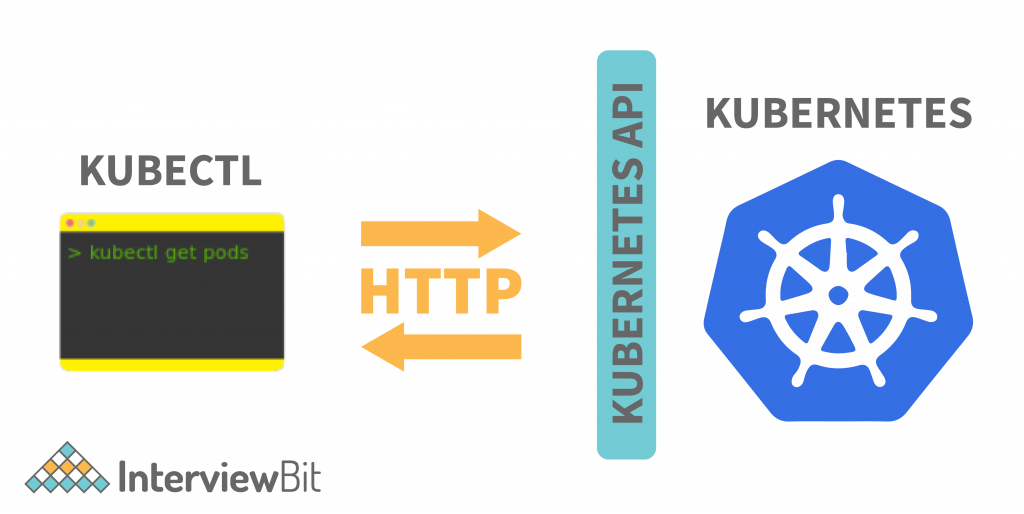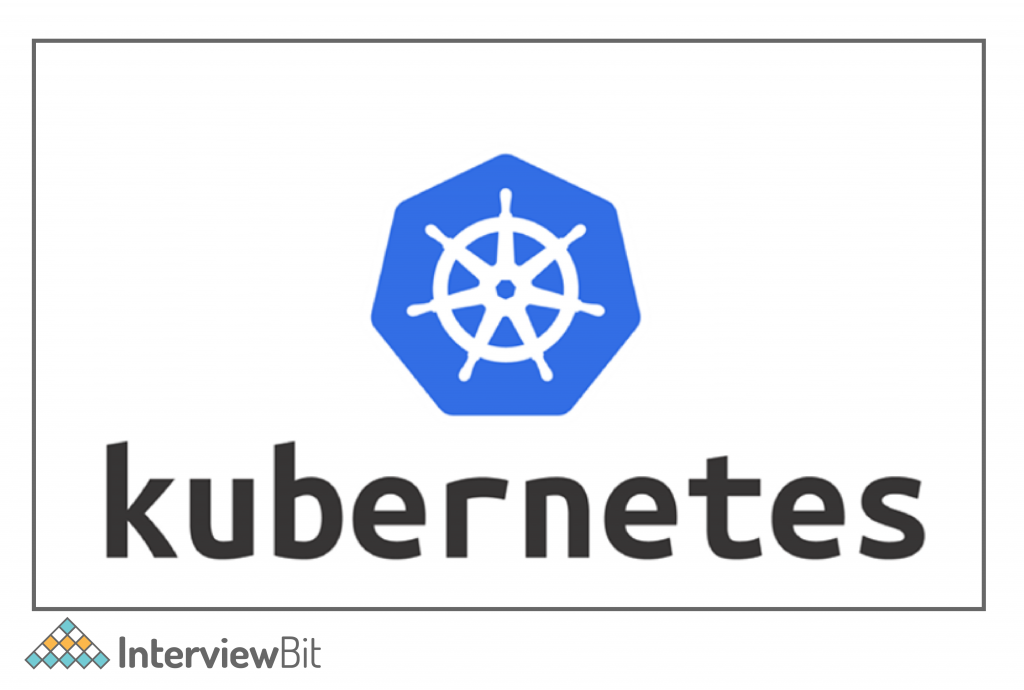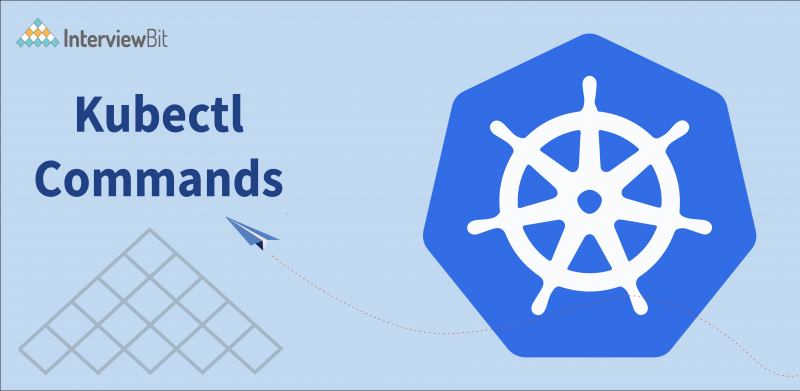- What is Kubernetes?
- Kubectl Commands
- 1. Cluster Management
- 2. Namespaces
- 3. Node operations
- 4. Listing Resources
- 5. Daemonsets
- 6. Events
- 7. Logs
- 8. Deployments
- 9. Replication Controllers
- 10. ReplicaSets
- 11. Secrets
- 12. Services and Service Accounts:
- Kubectl Syntax
- Kubectl Best Practices
- 1. Know the defaults
- 2. Implement simple aliases
- 3. Learn how to use help
- 4. Present output at regular intervals
- 5. Utilise the dry run for testing
- Conclusion
- FAQs
- Q.1: What is Kubectl used for?
- Q.2: What are the features of Kubectl?
- Q.3: How does Kubectl command work?
- Important Resources
If you are going through this article, you are presumably familiar with Kubernetes and wish to interact with a Kubernetes cluster. Be it any way you have provisioned the cluster, the standard command line employed to communicate with it is Kubectl. This article expects that you have a fundamental understanding of Kubernetes and the Kubectl commands.

Kubectl provides three techniques:
- The technique of “Imperative commands” directly expresses to Kubernetes what operation to execute on which objects, for instance: kubectl delete service or kubectl create pod.
- The technique of “Imperative Object Configuration” is like the first one, except that it functions on manifest files instead of objects directly, for instance, kubectl create -f manifest.yaml.
- The technique of “Declarative Object Configuration” takes manifest files as input but utilises an “upsert” logic and develops objects if they don’t exist, or it revises prevailing objects that differ from the specifications in the input manifest files. kubectl apply -f manifest.yaml is the command for this technique.
It is to be noted that a proper declarative approach does not exist yet as Kubectl can’t auto-delete objects. The “–prune” option for the “kubectl apply” command lets you attain a fully declarative approach, but currently, this option is in alpha at the time of this writing and therefore it is not deemed good enough for general use. Before diving into the code, it is important to note a few things.
Confused about your next job?
They usually regard the object notation as an object type, followed by a slash, then the object name. For instance, the notation will be “pods/mypod” to address the “mypod” pod. A few commands receive different notations (e.g., “kubectl get pod mypod”), hence you might observe different notations utilised throughout this article.

What is Kubernetes?

A fully resource-centred system, Kubernetes provides an internal state of resources, and every Kubernetes operations are CRUD operation on these resources. You can fully manage Kubernetes by handling these resources, and Kubernetes determines what to do based on the present state of resources. For this purpose, we organize the Kubernetes API reference as a list of resource types, along with their associated operations.
Let’s take an example into consideration.
Assume that you want to build a ReplicaSet resource. To accomplish so, you would determine the ReplicaSet in a file named replicaset.yaml file, and then pass the following command:
<strong>$ kubectl create -f replicaset.yaml</strong>
Certainly, this builds your ReplicaSet in Kubernetes. But what goes on behind the scenes?
Kubernetes includes a create ReplicaSet operation, and like other Kubernetes operations, it is brought to light as an API endpoint. The exact API endpoint for this operation is:
POST /apis/apps/v1/namespaces/{namespace}/replicasetsYou can locate the API endpoints of all Kubernetes’ operations in the API reference, comprising the above-mentioned endpoint. To create a definite request to an endpoint, you require to pre-pend the URL of the API server to the endpoint paths that are mentioned in the API reference.
When you run the above command, kubectl initiates an HTTP POST request to the above API endpoint. The ReplicaSet definition (which you added in the replicaset.yaml file) is passed in the request’s body. This is how kubectl functions for all commands that connect with the Kubernetes cluster. In all these instances, kubectl only makes HTTP requests to the relevant Kubernetes API endpoints. Note that it’s entirely possible to control Kubernetes with a tool such as curl by manually issuing HTTP requests to the Kubernetes API. Kubectl simply makes it simpler for you to utilise the Kubernetes API. These are the fundamentals of what kubectl is and how it works.
Kubectl Commands
The kubectl command-line utility is a mighty tool, and let’s go through the basic kubectl commands that apply to all Kubernetes objects.

1. Cluster Management
A Kubernetes cluster is a collection of nodes that execute containerized applications. It lets containers run across several machines and environments: cloud-based, virtual, on-premises and physical. Listed below are the kubectl commands that can be utilised to manage a cluster.
- kubectl cluster-info
Display endpoint information regarding the services and master in the cluster
- kubectl version
Show the Kubernetes version functioning on the client and server
- kubectl config view
Get the configuration of the cluster
- kubectl api-resources
Make a list of the available API resources
- kubectl api-versions
Make a list of the available API versions
- kubectl get all –all-namespaces
List everything
2. Namespaces
Shortcode = ns
- kubectl create namespace <namespace_name>
Create namespace <name>
- kubectl get namespace <namespace_name>
List one or more namespaces
- kubectl describe namespace <namespace_name>
Show the detailed condition of one or more namespace
- kubectl delete namespace <namespace_name>
Delete a namespace
- kubectl edit namespace <namespace_name>
Edit and modify the namespace’s definition
- kubectl top namespace <namespace_name>
Display Resource (CPU/Memory/Storage) usage for a namespace
3. Node operations
A Node is a worker machine in Kubernetes and can either be a virtual or a physical machine, which depends on the cluster. Every Node is handled by the control plane. A Node can contain several pods, and the Kubernetes control plane handles scheduling the pods automatically across the Nodes in the cluster. The following commands can be utilised for Node Operations.
- kubectl taint node <node_name>
Revise the taints on one or more nodes - kubectl get node
List one or more nodes - kubectl delete node <node_name>
Delete a node or multiple nodes - kubectl top node
Display Resource usage (CPU/Memory/Storage) for nodes
- kubectl describe nodes | grep Allocated -A 5
Resource allocation per node - kubectl get pods -o wide | grep <node_name>
Pods running on a node - kubectl annotate node <node_name>
Annotate a node - kubectl cordon node <node_name>
Mark a node as unschedulable - kubectl uncordon node <node_name>
Mark node as schedulable - kubectl drain node <node_name>
Drain a node in preparation for maintenance - kubectl label node
Add the labels of one or more nodes
4. Listing Resources
Kubernetes resources are also regarded as Kubernetes objects related to a certain namespace, you can either utilise individual Kubectl get commands to jot down every resource one by one, or you can jot down all the resources in a Kubernetes namespace by executing a single command. Mentioned below is the list of commands to get the resource information.
- kubectl get namespaces
Create a plain-text list of all namespaces - kubectl get pods
Create a plain-text list of all pods - kubectl get pods -o wide
Create a comprehensive plain-text list of all pods - kubectl get pods–field-selector=spec. nodeName=[server-name]
Create a list of all pods functioning on a certain node server - kubectl get replicationcontroller [replication-controller-name]
In plain text, make a lst a specific replication controller - kubectl get replicationcontroller, services
Generate a plain-text list of all replication services and controllers
5. Daemonsets
A Daemonset assures that some or all Nodes run a copy of a Pod. As nodes are incorporated into the cluster, Pods are implemented to them. As nodes are erased from the cluster, those Pods are garbage collected. Erasing a DaemonSet will clean up the Pods it created.
- kubectl get daemonset
List one or more daemonsets - kubectl edit daemonset <daemonset_name>
Edit and modify the definition of one or more daemonset - kubectl delete daemonset <daemonset_name>
Delete a daemonset - kubectl create daemonset <daemonset_name>
Create a new daemonset - kubectl rollout daemonset
Manage the rollout of a daemonset - kubectl describe ds <daemonset_name> -n <namespace_name>
Show the comprehensive state of daemonsets within a namespace
6. Events
Shortcode = ev
Kubernetes events are objects that display what is happening within a cluster, like what decisions were implemented by the scheduler or why some pods were erased from the node. Events are the first thing to look at for application, along with infrastructure operations when something is not functioning as anticipated. Mentioned below are the Kubectl commands to get the events.
- kubectl get events
List current events for all resources in the system
- kubectl get events –field-selector type=Warning
List Warnings only
- kubectl get events –field-selector involvedObject.kind!=Pod
List events but exclude Pod events
- kubectl get events –field-selector involvedObject.kind=Node, involvedObject.name=<node_name>
Pull events for a single node with a distinct name
- kubectl get events –field-selector type!=Normal
From a list of events, filter out normal events
7. Logs
You can use Kubernetes logs commands to monitor, log and debug the pods
- kubectl logs <pod_name>
Print the logs for a pod
- kubectl logs –since=1h <pod_name>
Print the logs for a pod for the last hour
- kubectl logs –tail=20 <pod_name>
Get the current 20 lines of logs
- kubectl logs -f <service_name> [-c <$container>]
Get logs from a service and choose which container optionally
- kubectl logs -f <pod_name>
Adhere to new logs and print the logs for a pod
- kubectl logs -c <container_name> <pod_name>
For a container in a pod, Print the logs
- kubectl logs <pod_name> pod.log
Output the logs for a pod into a ‘pod.log’ file
- kubectl logs –previous <pod_name>
View the logs for the last failed pod
8. Deployments
Shortcode = deploy.
A Kubernetes Deployment is utilised to inform Kubernetes how to design or change instances of the pods that hold a containerized application. Deployments can enhance the number of replica pods, enable the rollout of revised code in a controlled way, or roll back to an earlier deployment version if required.
- kubectl get deployment
List one or more deployments
- kubectl describe deployment <deployment_name>
Show the in-depth state of one or more deployments - kubectl edit deployment <deployment_name>
Edit and revise the definition of one or more deployments on the server - kubectl create deployment <deployment_name>
Generate one a new deployment - kubectl delete deployment <deployment_name>
Delete deployments - kubectl rollout status deployment <deployment_name>
Check the rollout status of a deployment
9. Replication Controllers
Shortcode = rc
- kubectl get rc
Make a list of the replication controllers
- kubectl get rc –namespace=”<namespace_name>”
Make a list of the replication controllers by namespace
10. ReplicaSets
Shortcode = rs
- kubectl get replicasets
List ReplicaSets
- kubectl describe replicasets <replicaset_name>
Show the detailed state of one or more ReplicaSets
- kubectl scale –replicas=[x]
Scale a ReplicaSet
11. Secrets
A Kubernetes Secret is an object that comprises a minor portion of sensitive data like a token, a key or a password. Such data might otherwise be inserted in an image or in a Pod specification. Users can build Secrets and the system also generates a few Secrets with the help of the following Kubectl commands.
- kubectl create secret
Create a secret - kubectl get secrets
List secrets - kubectl describe secrets
List details about secrets - kubectldelete secret <secret_name>
Delete a secret
12. Services and Service Accounts:
A Kubernetes service is a logical abstraction for a deployed group of pods in a cluster (which all perform the same function) and Service accounts are used to provide an identity for pods. Pods that want to interact with the API server will authenticate with a particular service account.
- kubectl get services
Make a list of one or more services - kubectl describe services
Show the detailed state of a service - kubectl expose deployment [deployment_name]
Reveal a replication controller, service, deployment or pod as a new Kubernetes service - kubectl edit services
Edit and modify the definition of one or more services - kubectl get serviceaccounts
List service accounts - kubectl describe serviceaccounts
Show the in-depth state of one or more service accounts - kubectl replace serviceaccount
Replace a service account - kubectl delete serviceaccount <service_account_name>
Delete a service account
Kubectl Syntax
Kubectl commands adhere to syntax or a common structure, which lets administrators read and verify every Kubectl command entered in the terminal window. There are four important parameters to each Kubectl call:
kubectl <command> <type> <name> <flags>
The <command> parameter is the operation that should be executed on a resource. Kubectl backs several operations, such as describe, create, get, execute and delete.
The <type> parameter specifies the resource type, like pods, bindings, and nodes. Usually, Resource type designations make use of abbreviations to streamline the command line. For instance, the “persistentvolumeclaims” type can be shortened to “pvc.” The <type> parameter is strong since there are several resource types, which also include namespaces, services, jobs, resource quotas, replication controllers, leases and events. Programmers and Kubernetes administrators should be acquainted with a complete list of resource types.
The <name> parameter defines the name of the resource in the environment. If we omit the name parameter, the details for all resources are returned, similarly to a wildcard argument. Also, administrators can point out multiple resource types and names in the exact command line, as mentioned below.
kubectl <command> <type> <name1> <name2> … <nameX>
This is effective when the names are all the same resource type, for instance:
kubectl get pod test-pod1 test-pod2
Kubectl syntax also backs the combination of several resource types and names on the exact command line in two ways:
kubectl <command> <type1/name1> <type2/name2> … <typeX/nameX>
or:
kubectl get pod/test-pod1 replicationcontroller/xyzcorp-rc1
Lastly, the <flags> parameter incorporates optional flags to the command line. Flags differ with the command, so not all flags are available for all commands. For instance, the -s, (one dash shorthand notation) or –server (two dashes, longhand notation) flags designate the port and address of the Kubernetes API server.
The -o or –output <flag> sends responses to a terminal window in a certain format. For instance, the -o yaml flag will output a YAML-formatted API object, whereas the -o json flag will output a JSON-formatted API object.
Kubectl Best Practices
The Kubectl command line too seeks a level of specialisation in resource types, operations, and associated syntax. Let’s look at the five considerations that cut down the chances of blunders while working with Kubectl.
1. Know the defaults
A well-designed CLI will carry out the most frequently used option or path for most operations. Depending on the default when appropriate cut down time and lessen spelling and syntax errors in long and complicated commands. In Kubectl, for instance, the “get” operation offers an “all-namespaces” flag, which by default is set to false but can be true or false, hence when admins utilise a “get” operation, it will just list the requested object in the present namespace by default, instead of all namespaces. If this is the intended behaviour, there is no requirement to incorporate the flag and option explicitly, which potentially lessens mistakes and oversights.
2. Implement simple aliases
Often CLIs utilise readable phrases and terms for complicated resources. Though the aim is to make command line operations, flags, and resources more human-readable, it also incorporates extreme opportunities for spelling errors, specifically where admins frequently use long names. Using precise and effective aliases lets admins utilise the same items having shorter designations, which are less readable but also less susceptible to errors. In Kubectl, for instance, it is much easier and faster to replace the “replicationcontrollers” resource type with the “rc” alias, or the “horizontalpodautoscalers” resource type with the “hpa” alias. Be persistent with the usage of aliases, especially when several aliases are available to let the script be more readable to others.
3. Learn how to use help
Command lines can be complex to remember with complicated syntax and granular options. Administrators and programmers can readily feel overwhelmed when they design or evaluate scripts with commands that call for arcane details or are used rarely. Well-designed CLIs offer an extensive help system. To access kubectl’s help system, utilise kubectl help at the kubectl command line; help unveil the proper syntax and highlight options for sought-after operations. Additionally, the ongoing version reference is promptly available with the version operation. Learn the ways to access logs for debugging and operational details. For Kubectl, the logs operation reads and shows logs for a container in a pod.
4. Present output at regular intervals
Kubectl offers a way to output text to a stdout — standard output — device, including a terminal window. Incorporate output messages to highlight significant waypoints in the script if a script takes longer to perform as compared to what a user expects. This can restrict users from quitting a script inappropriately as they think the script was hung.
5. Utilise the dry run for testing
With the dry run option in kubectl, the CLI can step through a script without executing none of the operations. The dry run option helps debugging and script testing. In Kubectl, the run operation owns a “dry-run=true/false” flag that helps to test and evades unforeseen consequences on production systems.
Conclusion
This list is a good starting point for your Kubernetes administrative journey. These commands are comparatively easy, user-friendly, and varied on the basis of overall functionality. Hopefully, it hit on many different Kubernetes components and gave some quick management tips through Kubectl. These commands are extremely powerful and are significant for team members of all skill levels.
FAQs
Q.1: What is Kubectl used for?
Ans: Kubectl lets you run commands against Kubernetes clusters. You can make use of Kubectl to deploy applications, inspect and handle cluster resources, and view logs.
Q.2: What are the features of Kubectl?
Ans:
- We know Kubectl as the swiss army knife of container management and orchestration
- It is a huge CLI that runs commands against the Kubernetes cluster and manages the cluster manager
- Kubectl makes this process more seamless and straightforward
- Kubectl lets users design, supervise, update, and delete Kubernetes objects
- Each Kubernetes command has an API
Q.3: How does Kubectl command work?
Ans: Kubectl, the command-line tool is used to run commands against Kubernetes clusters. It accomplishes this by authenticating with the Master Node of your cluster and making API calls to perform a variety of management actions.







 Join WhatsApp Group
Join WhatsApp Group


